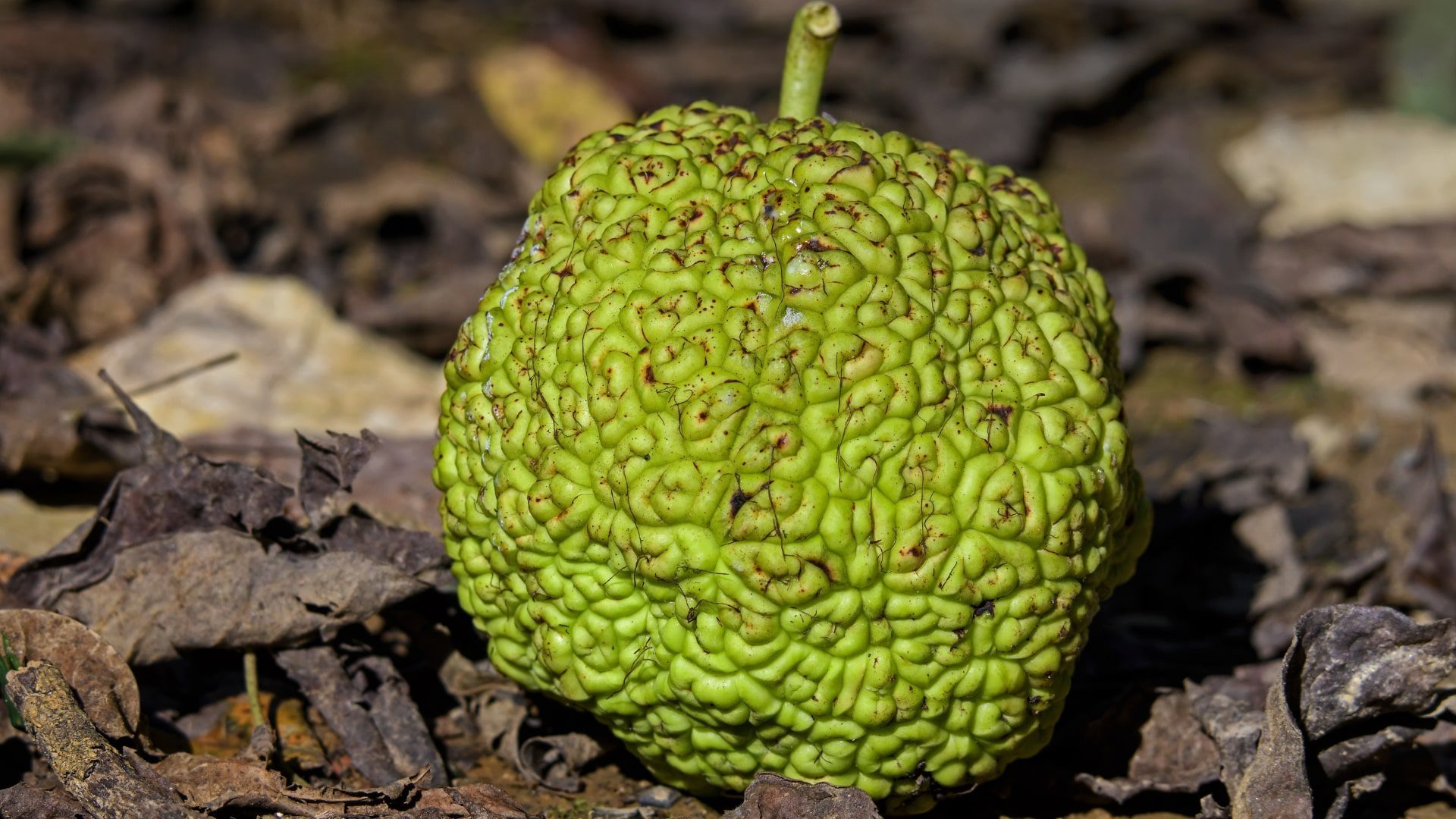
If you’ve ever come across the strange, wrinkled, lime-green fruit that looks like a brain, you’ve probably wondered: “Can humans eat Osage orange fruit?”
The Osage orange (scientific name Maclura pomifera) is a fascinating tree native to the central United States. Its fruit attracts attention because of its unique texture, color, and grapefruit-sized appearance. While animals often ignore it, humans have long been curious about whether this odd fruit is safe — or even edible.
Let’s explore what happens if you eat Osage orange, its chemical makeup, potential health effects, and whether it’s truly food or just nature’s decoration.
Table of Contents
What Is an Osage Orange?
The Osage orange tree belongs to the mulberry family (Moraceae).
It’s not related to oranges at all — the name comes from its orange-tinted wood and citrus-like smell when the fruit is cut open.
Historically, the Osage Nation and early settlers used the wood for making bows, tools, and fence posts because it’s extremely strong and rot-resistant. The fruit, however, was rarely eaten, even by wildlife.
Can You Eat Osage Orange Fruit?
Technically, yes — Osage orange fruit is not poisonous to humans. But practically speaking, it’s not considered edible due to several factors:
-
The taste is extremely bitter and unpleasant.
-
The latex-like sap inside the fruit is sticky and can irritate the skin or mouth.
-
The texture is fibrous and hard, making it difficult to chew or digest.
In short:
You can eat Osage orange, but you won’t want to.
Is Osage Orange Fruit Toxic?
The fruit itself is not toxic or poisonous to humans or animals. However:
-
The milky sap inside contains latex compounds that can cause mild irritation to the skin or mucous membranes.
-
Sensitive individuals might experience itching, nausea, or a burning sensation if they consume too much.
So, while it won’t kill you, it’s best avoided as food.
What’s Inside the Fruit?
Each Osage orange fruit contains hundreds of tiny seeds embedded in its fibrous pulp. The seeds are the only truly edible part — but getting to them is tedious.
These seeds are rich in oil similar to sunflower or soybean oil. In laboratory settings, the oil has shown potential for use in food or cosmetics.
However, extracting seeds from the sticky pulp is labor-intensive, and the quantity is too small to make it practical for consumption.
Why Don’t Animals Eat It?
Interestingly, most animals ignore the fruit too. Deer, squirrels, and birds rarely eat Osage oranges. This puzzled scientists for decades.
The leading theory is that Osage orange evolved to be eaten by extinct megafauna, such as mastodons or giant ground sloths, which disappeared thousands of years ago. These large animals could have swallowed the fruit whole and dispersed the seeds through their droppings — an ecological relationship that no longer exists today.
What Happens If You Eat Osage Orange?
If you try to eat the pulp:
-
You’ll experience a bitter, woody taste.
-
The sticky latex may make your mouth feel dry or numb.
-
Ingesting a large amount may cause mild stomach upset.
However, eating a small piece accidentally will not harm you.
Uses of Osage Orange (Other Than Eating)
Even though the fruit isn’t edible, the Osage orange tree is quite useful:
-
Wood: Extremely durable, often used for fence posts, archery bows, and furniture.
-
Natural dye: The wood and roots can be used to create yellow dye.
-
Pest repellent: Some people place Osage orange fruits in basements or around foundations to repel spiders and insects — although scientific evidence for this is limited.
-
Ornamental: The bright green fruit and twisted branches make it a popular landscaping choice.
Health and Safety Notes
If you’re curious enough to try it:
-
Avoid eating the outer pulp or sticky juice.
-
Wash hands thoroughly after handling the fruit.
-
Do not attempt to eat large amounts or feed it to pets.
The seeds, once extracted, can be safely roasted or pressed for oil in small quantities, but they have little commercial or culinary value.
The Bottom Line
So, can humans eat Osage orange fruit?
-
Yes, but not recommended.
It’s not poisonous, but it’s also not palatable. The fruit’s sticky latex and woody texture make it unfit for eating.
You can safely handle or use the fruit for decorative purposes, but if you’re looking for something tasty or nutritious, stick with actual oranges, mangos, or papayas instead.
Key Takeaways
-
The Osage orange fruit is non-toxic but inedible.
-
Its latex sap can cause mild irritation.
-
The seeds are edible but difficult to extract.
-
Best uses: decoration, natural pest control, or woodworking.


